| Image | Pharaoh | Praenomen | Reign | Details |

|
Ahmose I
|
Nebpehtyre - Possessor of the might of Ra
|
c1549-1324 BC 18th Dynasty New Kingdom
|
He was the founder of the 18th Dynasty, who during his reign, completed the conquest and expulsion of the Hyksos from the Nile Delta, thus restoring Theban rule over the whole of Egypt as well as successfully reasserting Egyptian power in its territories of Nubia and Canaan. His reign laid the foundations for the New Kingdom, under which Egyptian power reached its peak.
|
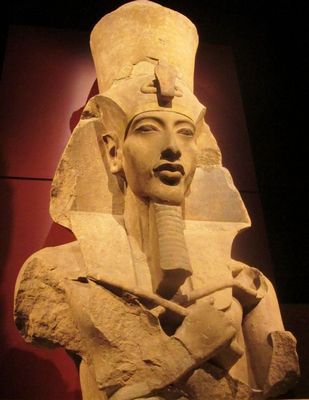
|
Akhenaten
|
Neferkheperure Waenre - The beautiful one of the manifestations of Ra, the unique one of Ra
|
1348–1336 BC or
1346–1334 BC 18th Dynasty New Kingdom
|
Akhenaten. In the fifth year of his reign, 1346 or 1348 BC, Amenhotep IV, reinvented himself as Akhenaten – ‘Effective for Aten’. In the following twelve years or so of his seventeen-year rule he abandoned the traditional Egyptian polytheism and introduced worship centred on the Aten, the sun disc. This change was not widely accepted. After his death, in around 1334 or 1336 BC, his monuments were dismantled and hidden, his statues were destroyed, and his name excluded from the King Lists. The traditional religious practices were gradually restored under his son Tutankhamun. Following his death there was no clear line of succession; and as result a new dynasty, i.e. the 19th was created, whose rulers discredited Akhenaten and his immediate successors, referring to Akhenaten himself as ‘the enemy’ or ‘that criminal’ in surviving texts.
|
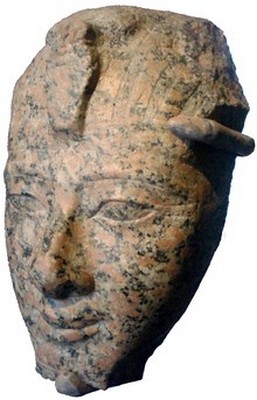
|
Amenhotep II
|
Aakheperura - Great are the Manifestations of Ra
|
1427 to 1401 BC 18th Dynasty New Kingdom
|
Amenhotep II (sometimes called Amenophis II and meaning 'Amun is Satisfied') was the seventh Pharaoh of the 18th dynasty of Egypt. Amenhotep inherited a vast kingdom from his father Thutmose III, and held it by means of a few military campaigns in Syria; however, he fought much less than his father, and his reign saw the effective cessation of hostilities between Egypt and Mitanni, the major kingdoms vying for power in Syria. It was his tomb that the Abd el-Rasuls robbed in 1901 and got away with it, despite the best efforts of Howard Carter, then chief Inspector of Antiquities for Upper Egypt.
|
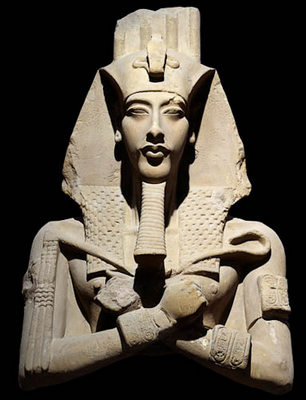
|
Amenhotep IV
|
Neferkheperure Waenre - The beautiful one of the manifestations of Ra, the unique one of Ra
|
1353–1348 BC or
1351–1346 BC 18th Dynasty New Kingdom
|
Amenhotep or Amenophis meaning ‘Amun is satisfied’, was the birth name or nomen of four Pharaohs who ruled during the 18th Dynasty. The most famous being Amenhotep IV who later became the heretic Pharaoh Akhenaten.
|
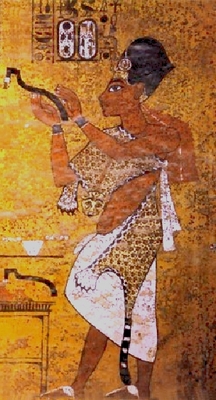
|
Ay
|
Kheperkheperure - Everlasting are the Manifestations of Ra
|
1323–1319 BC 18th Dynasty New Kingdom
|
He was the penultimate Pharaoh of Ancient Egypt's 18th dynasty. He held the throne of Egypt for a brief four-year period (probably 1323–1319 BC or 1327–1323 BC, depending on which chronology is followed), although he was a close advisor to two and perhaps three of the pharaohs who ruled before him and is thought to have been the power behind the throne during Tutankhamun's brief reign. Records and monuments that can be clearly attributed to Ay are rare, not only due to his short length of reign, but also because his successor, Horemheb, instigated a campaign of damnatio memoriae against him and other pharaohs associated with the unpopular Amarna Period.
|
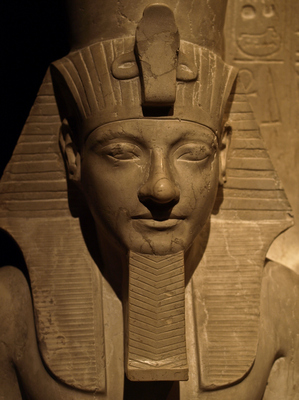
|
Horemheb
|
Djoser Kheperu Ra - The sacred one of the manifestations of Ra, chosen of Ra
|
1319-1292 BC 18th Dynasty New Kingdom
|
He was the commander in chief of the army under the reigns of Tutankhamun and Ay. After his accession to the throne, he reformed the Egyptian state and it was under his reign that official action against the preceding Amarna rulers began. Due to this, he is considered the man who reestablished his country after the troublesome and divisive Amarna Period. During his reign, he demolished monuments of Akhenaten, reusing them in his own building projects, and usurped monuments of Tutankhamun and Ay. Horemheb presumably remained childless since he appointed his vizier Paramesse as his successor, who assumed the throne as Ramesses I.
|

|
Neferneferuaten
|
Ankhetkheperure Merytwaenre - The (very) life of the manifestations of Ra, beloved of Waenra
|
c1334–1332 BC 18th Dynasty New Kingdom
|
Little is known of this Pharaoh, but it is possible that like the previous female Pharaoh, Queen Hatshepsut, Nefertiti, assumed the throne under the name of Neferneferuaten after the death of her husband, Akhenaten; but it is also possible that she was their daughter Meritaten, the wife of Smenkhkare.
|
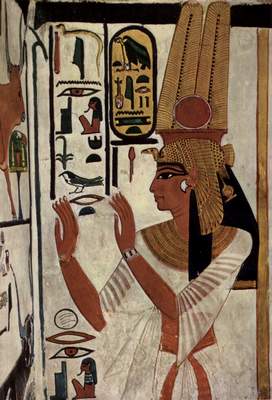
|
Nefertari
|
Great Royal Wife
|
- 19th Dynasty New Kingdom
|
She was the ‘Great Royal Wife’ of the Pharaoh Ramesses II, whose name means 'Beautiful Companion', 'beloved of Mut'. Her lavishly decorated tomb, QV66, is one of the largest and most spectacular in the Valley of the Queens. Ramesses also constructed a temple dedicated to her at Abu Simbel next to his own colossal monument there. Although nothing is known of her family background, some scholars believe that she was related to the Pharaoh Ay, possibly a great-granddaughter. She is believed to have died in around 1255 BC.
|
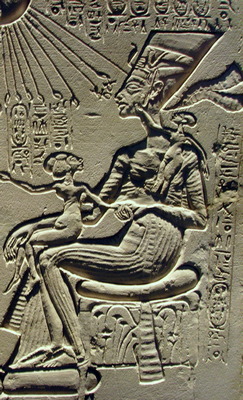
|
Nefertiti
|
Great Royal Wife
|
- 18th Dynasty New Kingdom
|
She was the ‘Great Royal Wife’ of the heretic Pharaoh Akhenaten. During her life she had many royal titles, including: ‘Hereditary Princess’, ‘Great of Praises’, ‘Lady of Grace’, ‘Sweet of Love’,’ Lady of The Two Lands’, Great King's Wife, his beloved’, ‘Lady of all Women’ and ‘Mistress of Upper and Lower Egypt’. Her fame is largely due the discovery of a now iconic bust of her, found in the workshop of the sculptor Thutmose at Tel el-Amarna. She is believed to have been born in around 1370 BC and died some forty years later in 1330 BC. The circumstances of her death are unknown, despite considerable speculation.
|
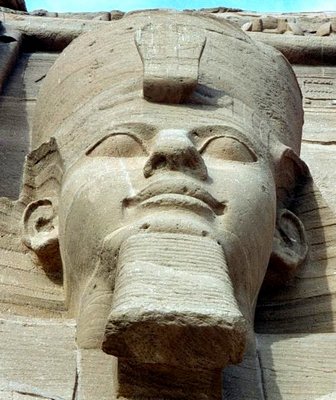
|
Rameses II
|
Usermaatre Setepenre - The justice of Ra is powerful, chosen of Ra
|
1279–1213 BC 19th Dynasty New Kingdom
|
Rameses or Ramses was the birth name or nomen given to eleven Pharaohs, which means ‘Ra [is] the one who gave birth [to] him’. The most famous being Ramesses ‘the Great’ or Ramesses II (c 1303-1213 BC) who ruled for nearly seventy years from 1279 BC to 1213 BC. Usermaatre Setepenre, the ‘Maat of Ra is powerful, Chosen of Ra’ was the Throne Name of Ramesses II. It was he in my book 'The Field of Reeds', who had an unbeknown elicit liasion with Meretseger, which threatened to destroy everyone they loved and to bring down the wrath of the Pantheon of Gods down upon them.
|
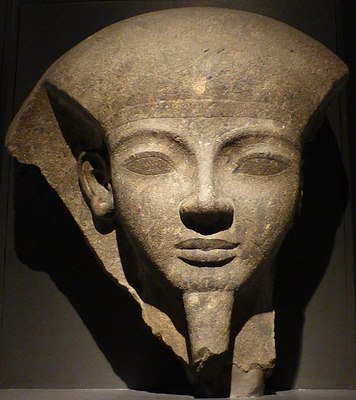
|
Rameses VI
|
Nebmaatre Meryamun - Lord of the Maat like Ra, beloved of Amun
|
Eight years mid-to-late 12th century BC 20th Dynasty New Kingdom
|
He usurped KV9, a tomb in the Valley of the Kings planned by and for Ramesses V, and had it enlarged and redecorated for himself. The craftsmen's huts near the entrance of KV9 covered up the entrance to Tutankhamun's tomb, saving it from the tomb robberies within occurred within 20 years of Ramesses VI's death. Ramesses VI may have planned and made six more tombs in the Valley of the Queens, none which are known today.
|
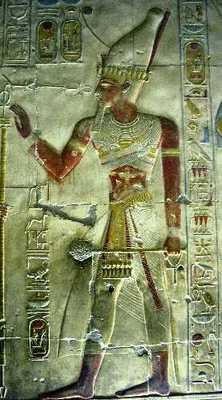
|
Seti I
|
Menmaatre - Eternal is the Truth of Ra
|
1290–1279 BC 19th Dynasty New Kingdom
|
He was the son of Ramesses I and Sitre, and the father of Ramesses II. During his reign his efforts were largely concentrated in restoring order to the two lands following the religious upheaval created by the heretic Akhenaten. He also attempted to reaffirm Egypt's sovereignty over Canaan and Syria, which had been compromised by the increasing external pressures from the Hittites; but was not successful in defeating them entirely. Although he was considered a great king by his peers, but his fame has been overshadowed since by that of his son, Ramesses II.
|

|
Smenkhkare
|
Smenkhkare Djoserkheperu - Potent is the soul of Ra, holy of forms
|
1335–1334 BC 18th Dynasty New Kingdom
|
Very little is known of Smenkhkare because from the reign of Horemhab and onwards, the pharaohs sought to erase the entire Amarna Period from history. The scant evidence that does exist is ambigous and often conflicting, and this very hard to interpret with any certainty. It is possible that Nefertiti took on role of a male persona of the Pharaoh Smenkhkare, when in this instance she could have elevated her daughter Meritaten to the role of Great Royal Wife.
|
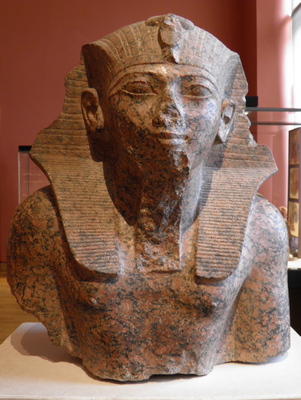
|
Thutmose IV
|
Menkheperure - Established manifestations of Ra
|
1401-1391 BC or 1397 – 1388 BC 18th Dynasty New Kingdom
|
Thutmose IV was born to Amenhotep II and Tiaa but was not actually the crown prince and Amenhotep II's chosen successor to the throne. Some scholars speculate that Thutmose ousted his older brother in order to usurp power and then commissioned the Dream Stele in order to justify his unexpected kingship. His most celebrated accomplishment was the restoration of the Sphinx at Giza and subsequent commission of the Dream Stele. In 1903 his tomb KV43, was rediscovered by Howard Carter, for the American millionaire, Theodore Montgomery Davis. Its discovery is told in my book – ‘The Field of Reeds’.
|
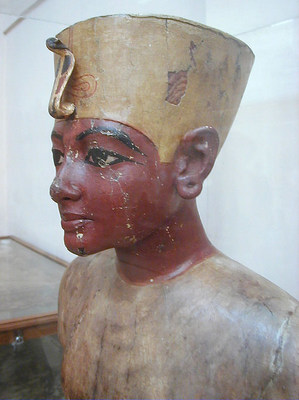
|
Tutankhamun
|
Nebkheperure - Lord of the forms of Ra
|
1334-1323 BC 18th Dynasty New Kingdom
|
Tutankhamun is the birth name or nomen of the Pharaoh Nebkheperure. He was born in about 1341 BC and died when he was eighteen or nineteen in c 1323 BC; and ascended the throne when only some nine years old. Following the death of his father Akhenaten he restored the old religion, but despite this act, his successors and in particular Horemheb did all they could to erase his name from both monuments and history itself. There has been much speculation about how he died at so young an age; with many theories being proposed ranging from him being murdered by his vizier Ay, a chariot accident, illness or disease, or killed in battle. There is I still believe no definitive answer to this question, which scholars are still arguing over; almost a century after the discovery of his tomb in 1922 by the English archaeologist, Howard Carter. A more detailed account of his life and the discovery of his tomb, can be found in Chapters 10 to 17.
|
| | | | | |